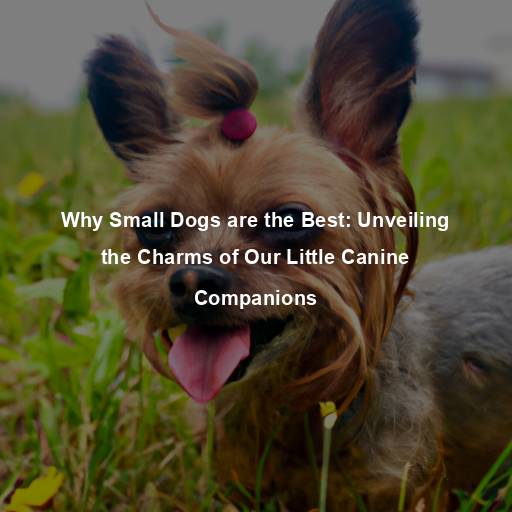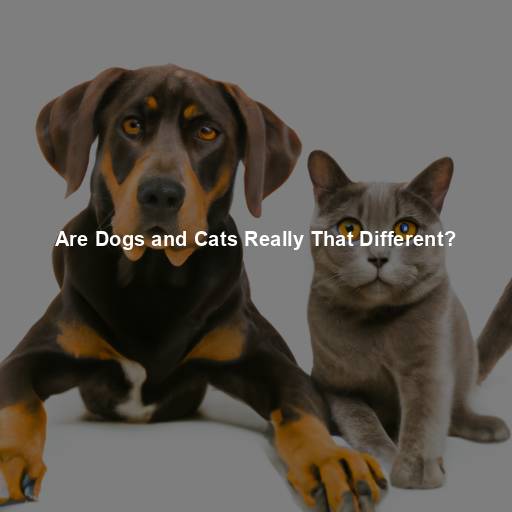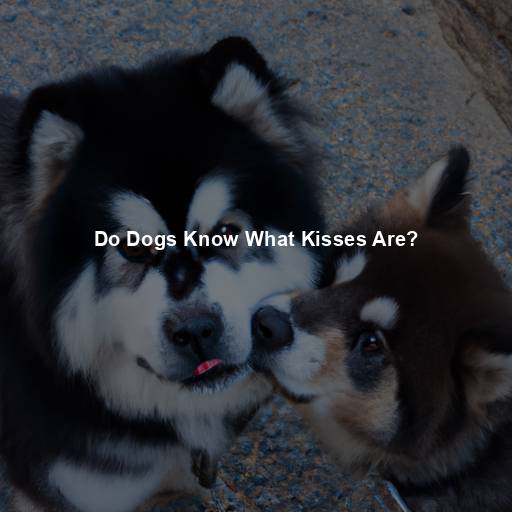Why Do Dogs Get on Top of You: Unraveling the Canine Behavior
Last Updated on July 13, 2023 by Evan
Contents [hide]
- 1 Understanding the Canine Mind
- 2 Responding to Your Dog’s Behavior
- 3 The Beautiful Complexity of Canine Behavior
- 4 Understanding Canine Body Language
- 5 Building Trust and Strengthening the Bond
- 6 Embracing the Canine Connection
- 7 FAQs – Why do dogs get on top of you?
- 7.1 Why do dogs like to get on top of their owners?
- 7.2 Is it a dominance behavior when dogs get on top of you?
- 7.3 Can allowing my dog to get on top of me encourage bad behavior?
- 7.4 Why does my dog always want to be on top of me when I’m sitting or lying down?
- 7.5 How can I discourage my dog from getting on top of me if I don’t like it?
Understanding the Canine Mind
Throughout history, dogs have carved their place in our lives, being the loyal and loving companions we cherish. Yet, there are those moments when our four-legged friends surprise us with perplexing behavior that baffles our human minds. One of these puzzling actions is when dogs insist on taking the high ground, literally. But why do they do it?
The Pack Mentality
To truly understand why dogs exhibit certain behaviors, we must first look at their evolutionary history. Dogs are descended from wolves, highly social animals that thrive in packs. Within a pack, there is a clear hierarchy, with one dominant individual leading the group. This pack mentality still resonates within our domesticated dogs.
Seeking Security and Comfort
Dogs are highly social animals that crave companionship and thrive on the presence of their human family members. Climbing on top of you may be their way of seeking security and comfort. By physically being close to you, they can feel safe and protected. This behavior is particularly common in dogs that have separation anxiety or are feeling anxious or stressed.
Displaying Affection and Bonding
Picture this: you’re sitting on your cozy couch, minding your own business, and suddenly, your furry friend decides to play the role of an acrobat by scaling the heights of your being. But hold on, before you get perplexed, this unexpected moment is actually an intimate gesture. Dogs possess an incredible knack for sensing our emotions and they express their fondness by seeking physical proximity. So, when they gallantly perch themselves upon you, it’s a burst of love, an eloquent way of saying, “You are my world, and I want to be by your side, always”.
Attention-Seeking Behavior
Dogs, those enigmatic and cunning creatures, possess a remarkable ability to grasp the art of capturing our attention in a flash. Their unconventional method of scaling the heights to claim your throne may leave you perplexed, yet it is a strategic maneuver wielded to provoke an interaction. By infiltrating your space, these astute beings ingeniously guarantee your unwavering focus. Such behavior frequently emerges from moments of ennui or mental stagnation, where dogs yearn for mental stimulation.
Temperature Regulation
Believe it or not, dogs can also climb on top of you for practical reasons such as temperature regulation. Dogs have a higher body temperature than humans, and by being in close proximity to you, they can benefit from your body heat. This behavior is particularly common in colder climates or during the winter months when dogs seek warmth and comfort. It’s their way of snuggling up and staying cozy.
Marking Territory
Dogs have a keen sense of smell and use scent marking as a way to communicate with other animals. By climbing on top of you, they may be leaving their scent and marking their territory. This behavior is more commonly seen in intact male dogs that are more prone to marking behaviors. It’s their way of saying, “This human is mine, and I want everyone to know it”.
Seeking Higher Ground
In the wild, canines often seek higher ground to survey their surroundings and keep a watchful eye for potential dangers. This instinctual behavior can manifest in our domesticated dogs as well. By climbing on top of you, they may be seeking a vantage point to observe their environment. It’s their way of feeling in control and aware of what’s happening around them.
Curiosity and Exploration
Dogs possess an insatiable curiosity that propels them to unabashedly explore the world around them. Their peculiar inclination to perch on top of you can be attributed to their unyielding desire for a vantage point that grants them a comprehensive view of their surroundings. In essence, it’s their way of engaging in an enticing quest to unravel the secrets of the unknown. This behavior is particularly prominent in young canines who are eagerly embarking on their journey of discovery.
Responding to Your Dog’s Behavior
Understanding the perplexing motivations behind the curious canine habit of climbing on top of their humans, it becomes crucial to respond in a manner that fosters a nurturing connection and promotes an atmosphere of positive companionship with our furry companions. By acknowledging the intricate dynamics at play, we can fortify the bond while embracing the burst of affection and trust that surges within them. Let us navigate this terrain with open hearts and open minds, embracing the delightful enigma of our four-legged friends.
Set Boundaries
Having your furry companion jump on you can be cute, but it’s important to establish some ground rules. Train your dog to understand the command “off,” which signals them to refrain from climbing on top of you in certain situations. Remember, consistency is crucial, so ensure that all members of your household are consistent with these boundaries.
Provide Alternative Comfort
If your dog climbs on top of you for comfort or security, provide alternative sources of comfort such as a cozy dog bed or a designated space where they can feel safe. By redirecting their need for security to an appropriate location, you can help them feel secure without invading your personal space.
Offer Mental Stimulation
Boredom and lack of mental stimulation can often lead to attention-seeking behaviors. Ensure that your dog receives enough mental and physical exercise to keep them engaged and entertained. Puzzle toys, interactive games, and daily walks can go a long way in keeping your dog mentally stimulated and less likely to climb on top of you for attention.
Reinforce Positive Behavior
Building a harmonious relationship with our furry companions can be a perplexing journey, but fear not, for there is a burst of wisdom to guide you! As we navigate the winding path of dog ownership, it is essential to shower our beloved canines with affirmation and rewards when they demonstrate the behaviors we hold dear. By utilizing the power of positive reinforcement – be it through delectable treats, heartfelt praise, or showers of affection – we can unlock the mysterious code of canine comprehension, encouraging our four-legged friends to embark on a boundless voyage of appropriate conduct.
Seek Professional Help if Needed
If your dog’s behavior becomes excessive or problematic, it’s advisable to seek the guidance of a professional dog trainer or animal behaviorist. They can assess the underlying causes of the behavior and provide you with appropriate strategies to address it effectively.
The Beautiful Complexity of Canine Behavior
Welcome to the captivating realm of canine behavior, where the enigmatic blend of instincts, emotions, and acquired habits leaves us in awe and wonder. As we navigate this mysterious realm, it is crucial to approach our furry friends’ conduct with a mixture of patience, comprehension, and a yearning to deepen our connection with them. In every wag of their tails, every affectionate lick, and occasionally even when they decide to perch atop us, lies a profound expression of their unfaltering love and unwavering loyalty. Embrace the intricacies of their actions and treasure each moment spent with your loyal, four-legged companion.
Unlocking the enigmatic world of dog training and behavior shaping unveils the compelling influence of positive reinforcement. Through the art of rewarding desired behaviors, a profound connection is established, allowing us to effectively convey our expectations while inspiring our furry companions to perpetuate these behaviors. Dive into this perplexing realm and unleash your dog’s potential for a harmonious future.
Timing is Key
Timing is key when it comes to utilizing positive reinforcement effectively. It’s crucial to offer the reward immediately after your furry friend displays the desired behavior. This helps them form a strong connection between their actions and the incentives they receive. Whether it’s a delectable treat, a beloved toy, or an enthusiastic display of praise, ensure that the reward is given promptly and in a manner that truly resonates with your dog.
Consistency and Clarity
Establishing a harmonious dynamic with your furry friend calls for weaving consistency into the fabric of your positive reinforcement training. It’s vital to synchronize efforts among all household members, using consistent cues and rewards. By eliminating any murkiness, you provide your dog with a crystal-clear comprehension of which behaviors are deserving of reinforcement. Remember to stay steadfast in your expectations and avoid unintentionally rewarding those unwanted actions.
Gradual Progression
When embarking on the journey of training your furry companion, it is crucial to tread with caution and commence with bite-sized objectives. As you gradually elevate the challenge, you gift your four-legged friend the chance to cultivate a sense of accomplishment and self-assurance, ultimately solidifying their positive conduct. By fragmenting intricate behaviors into more manageable stages and showering praise and rewards at each juncture, you will effectively communicate your expectations to your beloved pet and ignite their unwavering motivation.
Use Verbal and Non-Verbal Cues
Training and shaping your dog’s behavior involves more than just rewards. The power of verbal and non-verbal cues should not be underestimated. By uttering simple yet commanding words such as “sit,” “stay,” or “down,” you can effectively communicate your expectations. Additionally, incorporating hand signals or body language can greatly benefit dogs with a keen visual sense.
Understanding Canine Body Language
Understanding the intricate and mysterious language of our four-legged friends is the gateway to a deeper connection with them. While us humans rely on words, dogs have mastered the art of non-verbal communication, expressing their desires, feelings, and motives through intricate body language. By unraveling this enigmatic code, we unlock a world of comprehension, enabling us to meet their needs, empathize with their emotions, and decipher their intentions with astonishing accuracy.
Tail Language
The enigmatic language of a dog’s tail has long fascinated both pet enthusiasts and behaviorists alike. From exuberant wags to timid tucks, each nuanced movement provides a glimpse into the mysterious realm of canine emotions. A wagging tail, adorned with unabashed joy, becomes an animated symphony of happiness, while a timidly tucked tail paints an intricate portrait of fear and submission. However, it is the resolute stance of a stiff, erect tail that leaves us pondering, tangled in the web of alertness and aggression, urging us to closely observe the contextual tapestry of a dog’s body language in order to accurately decipher their complex emotional landscape.
Ear Positions
When it comes to decoding a dog’s emotions, their ears play a crucial role. Perked up ears can signify an inquisitive or attentive mindset, while ears pressed flat against the head might signal fear or submission. However, not all furry friends have pointy ears that give away their feelings so easily—some breeds with floppy ears present a more enigmatic challenge. In such cases, it’s essential to analyze other non-verbal cues to grasp the true emotional landscape of our canine companions.
Eye Contact
When it comes to the silent language of doggos, eye contact can pack quite the punch. It’s a wild world out there, and direct eye contact can be like throwing down the gauntlet, causing some furry friends to see red. On the flip side, those gentle, relaxed eyes are like a warm hug, signaling a canine comrade with nothing but good vibes to offer. Let’s remember to honor a pupper’s personal space and ease into eye contact with caution, especially when dealing with new furry faces.
Posture and Movement
Have you ever wondered what your furry friend is trying to communicate through their body language? Well, let me tell you, there’s a whole world of emotions tucked away in those wagging tails and perked-up ears. A dog’s posture is like a secret decoder ring, offering glimpses into their intentions and feelings. A relaxed, carefree body denotes a zen-like tranquility, while a rigid stance may signal caution or even hostility.
Vocalizations
When it comes to communication, dogs rely heavily on body language, but let’s not forget the surprising way vocalizations also come into play. From barks that demand attention to growls that warn of danger, and whines that express discomfort to howls that evoke a mysterious energy, deciphering the meaning behind each sound can be perplexing. However, by closely observing the context of these vocalizations and paying attention to the accompanying body language, we can unlock the secret messages our furry friends are trying to convey.
Building Trust and Strengthening the Bond
In the realm of canine companionship, forging an unbreakable alliance built on trust and mutual comprehension is paramount. To embark on a journey towards an indelible connection with your four-legged confidant, we present a medley of strategic methods poised to cultivate unyielding trust and cement the unbreakable bond shared betwixt you and your delightful companion. Delve into a cornucopia of wisdom and embark on this extraordinary adventure towards canine camaraderie.
Positive Reinforcement and Rewards
As mentioned earlier, positive reinforcement is a powerful tool in training and shaping behavior. By using rewards and positive reinforcement techniques, you create a positive association with you and the desired behaviors. This not only helps in training but also builds trust and reinforces the bond between you and your dog.
Quality Time and Attention
Our beloved canine companions are no strangers to the magic of companionship and the undying need for attention from their human family members. It is in these precious moments of togetherness that the foundation of unbreakable bonds is laid. Whether it entails embarking on adventurous walks, reveling in playful games, or indulging in cozy cuddles on the couch, these gripping experiences are vital for fostering a sense of love and appreciation. Remember, dedicating a cherished slice of each day to actively engage with your furry friend is the key to unlocking a world of genuine connection and unspoken devotion.
Respect and Understanding
When it comes to your furry friends, acknowledging their unique needs, boundaries, and personality is of utmost importance in fostering a deep sense of trust. Remember: patience and empathy are key. Avoid coercing your dog into any predicaments that may make them uneasy, as nurturing their individuality within a secure environment lays the groundwork for a harmonious bond built on mutual respect.
Consistency and Predictability
It’s no secret that our furry friends, dogs, can benefit greatly from a structured and predictable environment. By setting up clear rules, routines, and expectations, we provide them with a sense of security and a better understanding of what’s expected from them. When our interactions and responses to their behavior remain consistent, we create a solid foundation of trust, allowing them to confidently navigate their ever-changing world.
Physical Contact and Affection
When it comes to bonding with our four-legged friends, physical touch can be a game-changer. From gentle petting to cozy cuddles, it’s a language that transcends words and builds a bridge of trust and affection. But here’s the reality check: not all dogs are cut from the same cloth. Just like us humans, they have their own unique preferences and personal space needs.
Training and Mental Stimulation
Discover the transformative power of training sessions and mental stimulation for your dog, fostering a deeper bond and enhancing communication. Engage in cooperative problem-solving and interactive games to challenge their mind, while puzzle toys and fresh experiences stimulate their senses and reinforce your role as their trusted guide. Embrace the fulfilling journey of shaping behavior and strengthening the connection that lies at the heart of your canine companionship.
Embracing the Canine Connection
There is a certain indescribable magic that dogs bring to our lives, an enchanting blend of joy, love, and companionship that can leave us utterly speechless. As we delve into the intricate world of their behaviors, needs, and communication signals, we find ourselves on a remarkable journey of connection, working tirelessly to unravel the mysterious ways in which they express themselves. It is through this ceaseless pursuit of understanding and the unwavering commitment to their well-being that we forge an unbreakable bond, a tapestry of shared experiences that embraces the ebbs and flows of life. So let us revel in the enigmatic splendor of these furry companions, basking in the perplexity of their ways, and cherishing the extraordinary connection we are lucky enough to have with them.
FAQs – Why do dogs get on top of you?
Why do dogs like to get on top of their owners?
Dogs have a natural instinct to seek physical contact and closeness with their owners. Getting on top of their owners can be an expression of their desire for bonding and affection. It could also be their way of asserting their presence and securing a comfortable spot near their beloved humans. Dogs may choose to get on top of their owners due to their innate pack instincts, where being close to the leader provides a sense of security and reassurance.
Is it a dominance behavior when dogs get on top of you?
There is an intriguing shift in our understanding of dogs’ behavior when it comes to their desire to climb on top of their owners. While it was previously believed that this act was a display of dominance, emerging research suggests otherwise. It seems that these canine companions are instead yearning for attention, affection, and a sense of security when seeking out this closeness. However, it is essential to note that if a dog exhibits aggressive behavior or other signs of dominance, it is advisable to seek guidance from a qualified dog trainer or behaviorist to ensure a harmonious relationship for both owner and pet.
Can allowing my dog to get on top of me encourage bad behavior?
Allowing your dog to get on top of you does not necessarily encourage bad behavior. However, it is important to establish appropriate boundaries and understand your dog’s behavior to ensure a healthy human-canine relationship. Consistently reinforcing desired behaviors and setting necessary limits through positive reinforcement training can help shape your dog’s behavior according to your preferences. If your dog’s behavior becomes problematic or uncomfortable for you, seeking guidance from a professional trainer or behaviorist can be beneficial.
Why does my dog always want to be on top of me when I’m sitting or lying down?
As humans, our inclinations to commune with our furry companions can be inexplicably mutual. When we find ourselves in a position of repose, it is no coincidence that our pets seek out our company at eye level. This interaction, laden with both physical and emotional significance, is innately ingrained in the social fabric of dogs. Proximity to their human counterparts offers them solace and a much-needed sense of security, allowing them to stay ever vigilant of any impending perils or alterations to their surroundings. Furthermore, the radiance of our body warmth and the distinctive aromas we exude provide additional comfort to our beloved canines, creating an irresistible allure that cements our bond with them.
How can I discourage my dog from getting on top of me if I don’t like it?
If you prefer that your dog doesn’t get on top of you, it is important to establish consistent boundaries and train them accordingly. Using positive reinforcement techniques, redirect your dog’s behavior to a designated spot or encourage them to settle nearby with a comfortable bed or blanket. Reward and praise them when they choose to rest in the desired location, gradually reinforcing this behavior over time. Consistency and patience are key when training your dog, and seeking professional help can provide you with specific strategies tailored to your dog’s individual needs.







